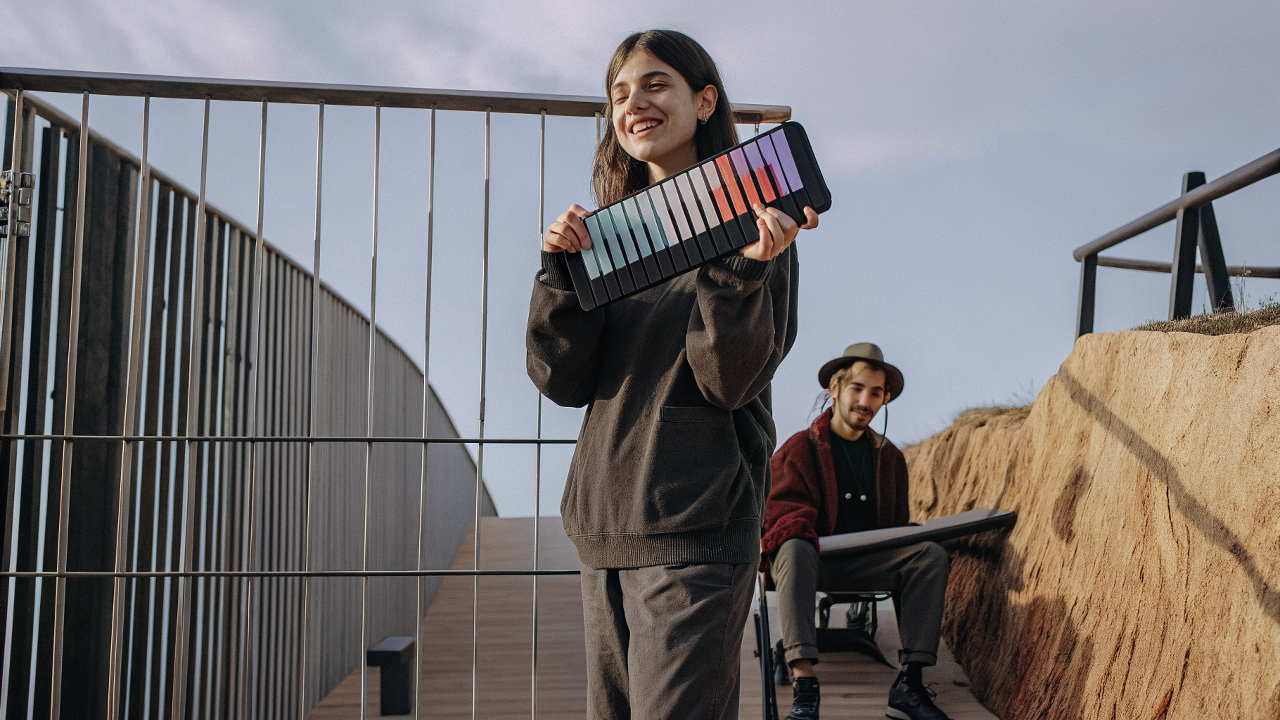
Looking for a piano that lights up keys so you can actually play songs in your first week? You’re in the right place. Light-guided keyboards turn practice into “follow the glow,” making rhythm, hand coordination, and note memory much easier. In this guide, we compare four standout options—from a smart, modular pick that grows with you to ultra-portable and kid-friendly choices—so you can choose the piano keyboard that lights up keys and fits your space, budget, and goals.

A piano that lights up keys gives you visual guidance—your next note literally glows—so you spend more time playing and less time guessing. Benefits include:
For many beginners, the glow is the difference between “I’ll try tomorrow” and “I’ll play today.”
Use this checklist to compare any piano that lights up keys:
1) Key count & feel
2) Light guidance quality
3) Learning ecosystem
4) Portability & power
5) Connectivity
6) Upgrade path
We keep brand names minimal and focus on user experience. The first pick is our “do-it-all” recommendation; the others are tailored to specific needs.

Why it stands out:
Best for: true beginners, students, busy adults, and creators who want one keyboard for practice, covers, and content.

Why it stands out:
Keep in mind: Less portable than compact models; check that the light system supports hands-separate practice and tempo control.

Why it stands out:
Keep in mind: Limited key range and lighter speakers. If you catch the practice bug, plan for an upgrade path.

Why it stands out:
Keep in mind: Look for a grown-up learning mode too, so the instrument grows with the child.
|
Use Case |
Key Range |
Light Guidance |
App/Lessons |
Portability |
Upgrade Path |
Best Fit |
|
Smart Modular Light-Up Keyboard |
29–53 (expandable) |
Bright LEDs, hands-separate |
Structured lessons + create mode |
High (slim + battery) |
Yes (modular) |
Beginners, students, creators |
|
Full-Size Learning Keyboard |
~61 |
Yes (varies by model) |
Often built-in + app support |
Medium (home use) |
Limited |
Home practice, broader repertoire |
|
Compact Budget Light-Up |
32–37 |
Basic follow-lights |
Basic modes, some app links |
Very high |
Upgrade to larger model later |
Entry-level on a budget |
|
Kid-Friendly Light-Up |
25–37 |
Bright, playful |
Game-style lessons |
High |
Some models offer lessons that scale |
Young learners, family use |
Bottom line: if you want the quickest path to songs with room to grow, the smart modular light-up option is the most future-proof piano keyboard that lights up keys.
A piano that lights up keys shines when the tech stays out of your way. Do this once:
Day 1 — Pair & Play:
Pick a beginner song you know. Follow the lights, slow tempo, 15 minutes.
Day 2 — Right Hand Only:
Play the melody with glow guidance. Loop short sections.
Day 3 — Left-Hand Chords:
Use one-tap chords or simple triads. Keep it slow.
Day 4 — Combine Hands:
Two-bar chunks. When mistakes rise, split hands again.
Day 5 — Rhythm & Dynamics:
Metronome on. Practice loud/soft phrasing while following the lights.
Day 6 — Record a Draft:
Capture 30–45 seconds. Listen back; note two fixes.
Day 7 — Share or Save:
Post a clip or keep a practice log. Small wins, steady streak.
With a piano that lights up keys, this plan turns “I’m trying to learn” into “I’m playing real music.”
Yes. Visual guidance reduces early frustration. Adults often see faster progress because the glow keeps practice focused and consistent.
For portability, 29–37 keys work. If you want more repertoire and left-hand bass sooner, choose a model that can expand or consider a 61-key home setup.
Most modern light-up keyboards support Bluetooth/USB-MIDI. Check your model’s compatibility list and update firmware for best results.
No, but they’re a great on-ramp. Many learners start with the glow, then add reading gradually.
Go direct for the newest bundles and support, or compare sets/specs on the product page:
If you want a piano that lights up keys to accelerate your first songs—and you also want room to grow into two-hand pieces and simple recording—the smart modular light-up keyboard is the most balanced choice in 2025. Start compact to make practice effortless; add key range when you’re ready. You’ll get the motivation boost of guided lights today and the flexibility to perform, record, and create tomorrow.
Read more

Top 5 Best Bluetooth APPS for Your Digital Piano
If you play on a Bluetooth-enabled keyboard, the right piano app can turn “I should practice” into “I can’t wait to practice.” This guide ranks the best app-connected keyboard experiences for begin...

What’s the Difference Between a Digital Keyboard and a Digital Piano?
If you’re shopping for your first instrument, you’ve likely run into two common terms: digital piano and portable keyboard. They may look similar, but the difference between a keyboard and a piano ...